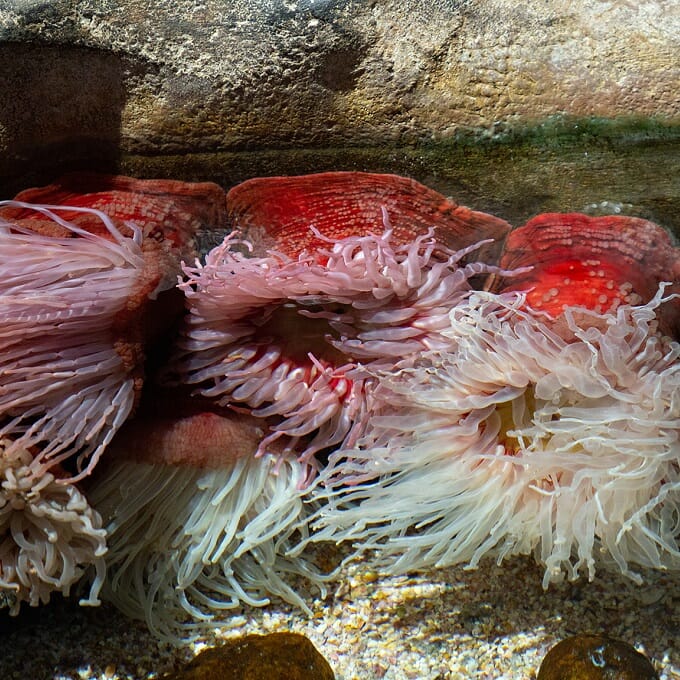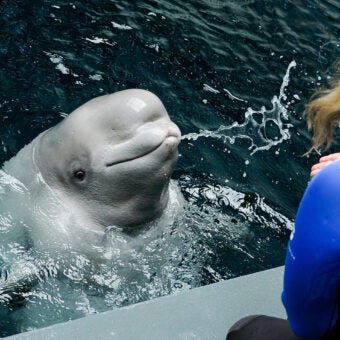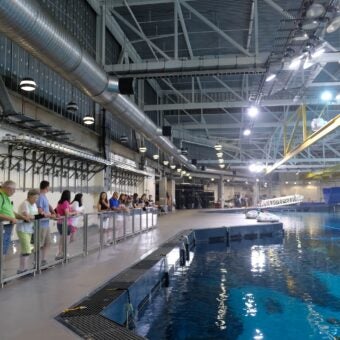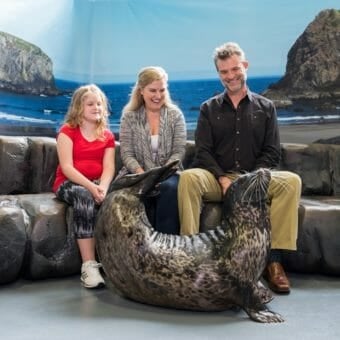-
Size
8 inches (20 cm) tall and 10 inches (25 cm) in diameter -
Diet
Small fishes, invertebrates -
Range
Eastern Pacific Ocean -
Habitat
Low intertidal zone
Physical Characteristics
- The fish-eating anemone can grow to 8 inches (20 cm) tall and 10 inches (25 cm) in diameter.
- It has a smooth red column without spots with short, slender, white tentacles which can be tipped with red or pink.
Animal Fact
The fish-eating anemone captures its prey by stinging cells called “nematocysts.” Located all along each tentacle, the cigar-shaped nematocyst contains a barbed, coiled thread.
Diet / Feeding
- It feeds on small fishes and a variety of invertebrates that it captures with its sturdy tentacles.
- While more delicate species rake in bits of food, the fish-eating anemone has sturdy tentacles that can capture shrimp and small fishes. Like other anemones, the fish-eating anemone grows larger when food is plentiful and shrinks in size when food is scarce.
- Prey is captured by stinging cells called “nematocysts.” Located all along each tentacle, the cigar-shaped nematocyst contains a barbed, coiled thread. The thread carries venom.
- When stimulated or touched by possible prey, the thread shoots out and the venom is injected into the prey organism paralyzing or killing it outright. The prey is held to the tentacles by the nematocyst threads.
- Tentacles then turn inward passing the food into a sack-like digestive cavity through the mouth located in the center of the ring of tentacles. Digestive enzymes secreted from the cavity lining break down the food into a thick broth which circulates through the anemone.
- Anything that cannot be digested is ejected back out through the mouth.
Range / Habitat
- Occurs in the cold coastal waters of the Eastern Pacific from Alaska to Southern California.
- This anemone is typically found on the sides of rocks from the low intertidal zone to about the 160-foot (49 m) depth.
Reproduction & Growth
- Anemones reproduce in a variety of ways according to species.
- Some do so asexually by splitting either horizontally or vertically.
- Others grow from pieces of pedal discs left behind when the animal moves.
- Some reproduce sexually from eggs and sperm produced in separate female and male individuals.
Conservation Status
- “Not Evaluated” on the IUCN Red List.
- Rocky reefs are important habitats for many kinds of fish and invertebrates, including the fish-eating anemone, but “rockhopper” trawls, used in commercial fishing, can leave reefs a tumbled wasteland, not to recover for decades.
Additional Information
- Previously known as Tealia piscivora.
- A small fish called the “painted greenling” sometimes will lie among the tentacles of a fish-eating anemone to seek protection, much like a clownfish does in certain tropical anemones.
- Sea anemones are primitive animals. Several thousand species live in the sea at various depths and temperatures. They are most abundant in tropical coastal waters. They may be solidly colored, striped or patterned.
- The base of an anemone ranges in size from 0.5-36 inches (1.3-91 cm) depending on the species. Most attach to rocky surfaces, although there are several species of burrowing anemones.
- Anemones do not permanently attach to the substrate. They can move if food is lacking or a predator threatens them. Limited movement is achieved by either slowly gliding along on the pedal disc or detaching completely and moving with the tide. Some can even “swim” by bending their bodies or lashing their tentacles. A few do “handstands” and travel on their tentacles.





